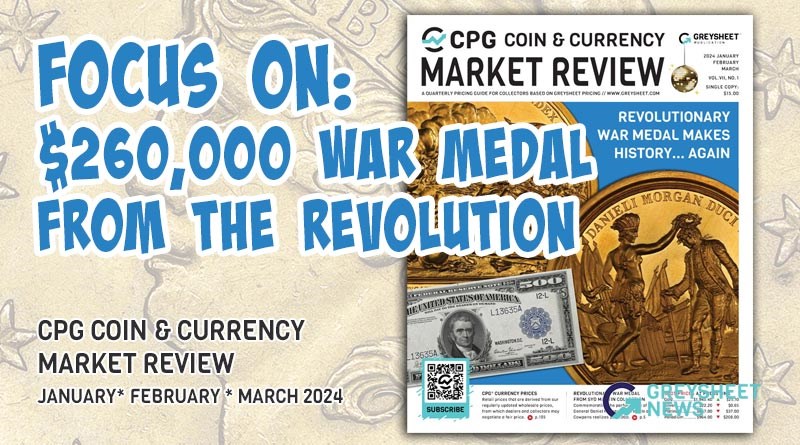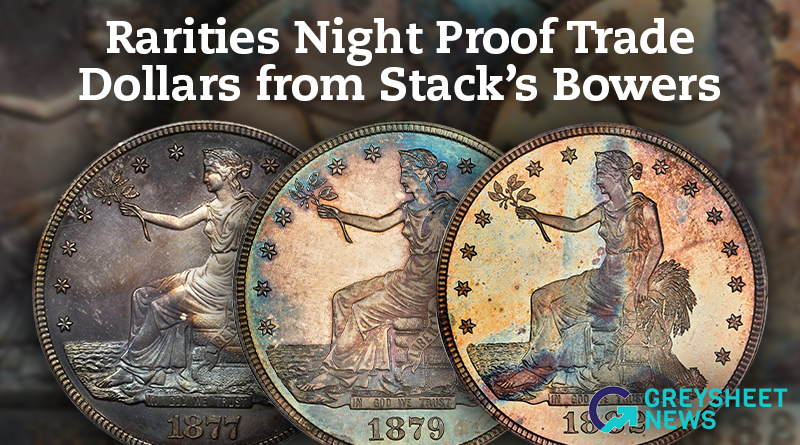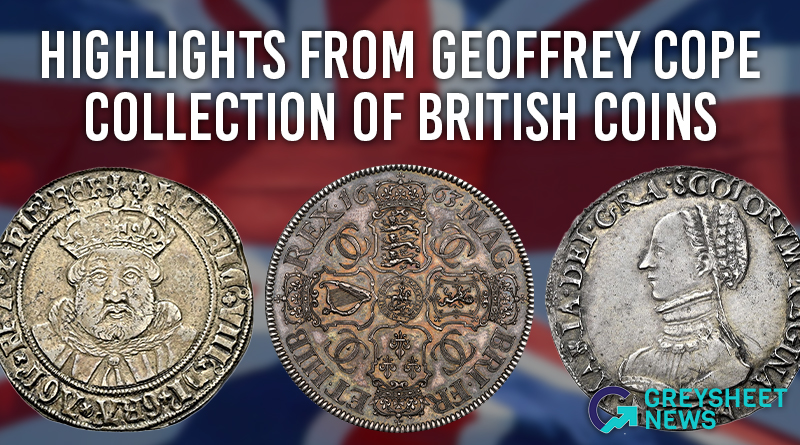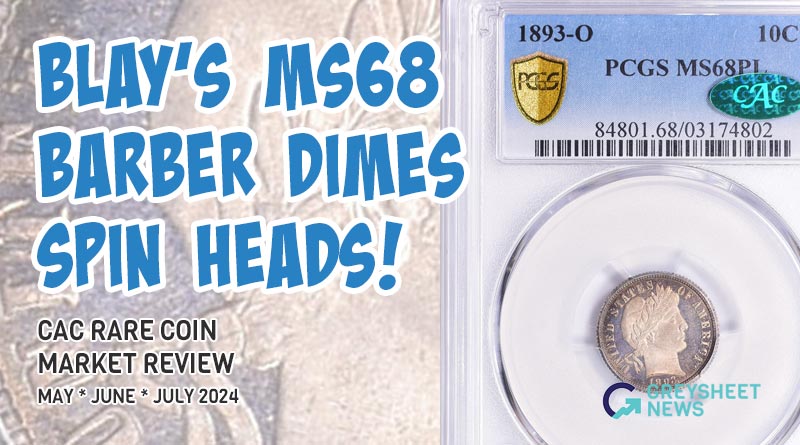Digging Deeper: Why Did a Revolutionary War Medal Sell for $264,000?
This medal now joins the finest collection of American Revolutionary War medals outside of museums and other institutions.
The late Sydney F. Martin formed one of the all-time greatest collections of pre-1793 American items. Among several American Revolutionary War medals owned by Syd Martin was an original in copper that commemorated the performance of General Daniel Morgan in the Battle at Cowpens in South Carolina on January 17, 1781. This particular medal is of very high quality for an original revolutionary war medal. It brought $264,000 in the fifth major auction session of the Syd Martin Collection, on November 13, 2023, at the Stack’s Bowers headquarters in California.
The owner of The Resolute Americana Collection was the buyer. This medal now joins the finest collection of American Revolutionary War medals outside of museums and other institutions. American Revolutionary War medals, including this one, that were authorized by the U.S. Congress and recognize individual heroes are known as Comitia Americana medals.
As the U.S. Mint did not come into existence until 1793, and U.S. Mint personnel could not legally issue gold or silver items before 1794, original Comitia Americana medals were struck at the official Paris Mint on behalf of the United States of America, during the 1780s and early 1790s. Restrikes and official replicas, in Paris and in Philadelphia, were struck during later time periods and are generally much more affordable than originals. Many cost less than $1,000 each.
The owner of The Resolute Americana Collection considers Comitia Americana medals, “because of the pioneering research by John Adams and Anne Bentley, to be finally emerging from the shadows to be appropriately appreciated for their rarity and historical importance. It is an honor to be a custodian of these rarities and to be able to share them with a wider audience.”
There are plans to publicly display The Resolute Americana Collection set of Comitia Americana Medals in 2026, in honor of the 250th anniversary of the U.S. Declaration of Independence. A Daniel Morgan original in copper was needed for this set.
Only three or four Daniel Morgan originals in copper are collector or family (privately) owned in the present, and just one in silver, which was auctioned by Stack’s Bowers on November 14, 2019, for $114,000. Please see my review of the auction of the John Adams Collection of Comitia Americana and other American Revolutionary War medals, which was published in the February 2020 issue of The Monthly Greysheet and may now be accessed for free at Greysheet.com.
For some of the other ten Comitia Americana medal issues that were struck in Paris, more than twenty are known in copper. As there is no scientific and historically consistent definition of “bronze;” I refer to any item that is at least 90% copper as being copper, even if it meets the requirements of so-called “French Bronze.”
Lt. Colonel William Washington, probably a second cousin of George Washington, also received a Comitia Americana Medal for his performance in the battle at Cowpens, South Carolina. In addition to strikings in silver, more than thirty copper originals of this William Washington medal survive, many of which are privately owned.
The sole original, Daniel Morgan Comitia Americana medal in gold, which was awarded to the general himself, was stolen in 1818 from a bank vault in Pittsburgh and never recovered. An official replica in gold was made in 1839 and this replica was auctioned by Stack’s Bowers in April 2022, for $960,000. In silver and copper, Daniel Morgan at Cowpens medals are among the rarest of original American Revolutionary War medal issues.
This copper original that Stack’s Bowers auctioned on November 13 for $254,000 is an excellent medal. The light creamy brown colors mix well with a slightly darker brown tone. The colors are natural. I did not see any evidence that this medal has ever been dipped or otherwise artificially lightened.
The obverse is more than very attractive and the reverse is attractive to very attractive. The striking quality and level of preservation are exceptional.
There are some physical details and relatively minor imperfections that I noted as part of my analysis. Overall, the small gashes and few mild hairlines are inconsequential, certainly consistent with a 64 or higher grade. There are a few areas of faint corrosion, some of which were treated. The only corrosive spot that really stands out is a small, green bumpy oval between TIS in the legend and the clouds. Most pre-1800 copper coins and medals have been oiled or otherwise lubricated in the past, and this one was to a medium extent.
There are some very small lumps and mounds from imperfections in the dies, the likes of which are frequently seen on medals and coins from the eighteenth century. Moreover, the borders are very much superior to those of most surviving, eighteenth century medals. The semi-glossy edge captures attention.
This medal is PCGS certified as Specimen-64. It could be fairly debated as to whether Comitia Americana medals are business strikes or are special strikings. They are not Proofs.
The assigned 64 grade is more than fair. It is very much superior to either of the two Morgan at Cowpens copper originals that were in the collection of John Adams. Indeed, this is one of the best surviving Comitia Americana originals of any design type or metal.
Certainly, the $264,000 result was very strong, an auction record for a Comitia Americana medal in copper. Quality, rarity and historical importance are all key factors. The battle at Cowpens had tremendous consequences.
The members of the Continental Congress voted to award medals to three officers who excelled in the Battle at Cowpens, South Carolina, on January 17, 1781. In addition to a gold medal for General Morgan, Lt. Colonel William Washington and Lt. Colonel John Eager Howard were awarded Comitia Americana medals in silver.
Earlier, General Horatio Gates was awarded a Comitia Americana medal for his success in two landmark battles at Saratoga, in upstate New York, in September and October 1777. These were extremely important victories for the Americans. At Saratoga, Daniel Morgan, then a colonel, distinguished himself as a rifleman, a courageous leader of troops into battle and a strategist. Before the Battle at Cowpens, the American rebels were losing in the South.
The British had captured Savannah, Georgia in 1778 and established a position at Augusta soon afterward. In May 1780, the British conquered Charleston, South Carolina after months of fighting, a major victory for them. In August 1780, American Revolutionary forces were brutally and thoroughly defeated at Camden, South Carolina, then a strategically important city.
British Colonel B. Tarleton had been extremely successful in the South. General Morgan outsmarted Colonel Tarleton before British forces even reached Cowpens. Morgan made an effort to learn about Tarleton’s personality and tactics.
The British were fooled into thinking that General Morgan’s troops were at a key fort (Ninety-Six), while they were really preparing for a fight in a carefully selected area of a cow pasture. By the time that Colonel Tarleton found General Morgan’s forces, the British troops were tired.
General Morgan carefully planned a response so that Colonel Tarleton would think that the British were defeating the American Revolutionaries and gaining ground. In reality, Daniel Morgan placed militiamen who he knew were likely to be unreliable at the front line with instructions to retreat after taking fire from the British. They were used as bait so that the British would aggressively move towards the center of the battlefield organized by General Morgan.
A second line in the center of Continental Army regulars and more experienced militiamen were ordered to fight briefly with the idea of retreating in a very short time, so that Tarleton's troops would think that they were easily advancing. Morgan selected a battleground with a ravine on one side and a creek on the other, but with partly obscured mild hills a little farther back. The plan was for the British to be concentrated in the center.
General Morgan and his colonels carefully placed riflemen, including snipers, along with appropriate weapons, farther back, on both sides, on short hills which were not imposing and were suited as hiding places. The plan worked and the British were enveloped on both sides as they moved forward.
Certainly, this battle was a turning point. The British lost territory and momentum in the South. Their loss at Cowpens devastated the morale of many British soldiers.
The tremendous courage and brilliant strategic thinking of Daniel Morgan at Saratoga in 1777 and at Cowpens in 1781, along with other military contributions, made him one of the great heroes of the war. If not for Comitia Americana medals, his achievements may have received little recognition.
Copyright ©2023 Greg Reynolds, Insightful10@gmail.com
Images of medals are shown courtesy of Stack’s Bowers Galleries.

Download the Greysheet app for access to pricing, news, events and your subscriptions.
Subscribe Now.

Subscribe to CPG® Coin & Currency Market Review for the industry's most respected pricing and to read more articles just like this.
Source: Greg Reynolds












Please sign in or register to leave a comment.
Your identity will be restricted to first name/last initial, or a user ID you create.
Comment
Comments